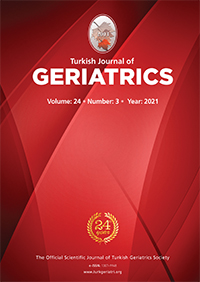2Marmara University Pendik Training and Research Hospital, Department of Anesthesiology and Reanimation , Istanbul, Turkey DOI : 10.31086/tjgeri.2021.229 Introduction: This study was intended to evaluate the relationship between the presence of obesity in geriatric patients, which is becoming more and more common in the intensive care unit, with the intensive care process and mortality.
Materials and Method: In this retrospective study, data on 2,114 patients aged 65 and over who were followed in the intensive care unit between January 2013-January 2020 were obtained electronically and evaluated.
Results: Patients were divided into two groups of 1,632 (77.2%) nonobese and 482 (22.8%) obese patients. It was determined that acute kidney injury development was more common in obese patients (326; 67.6%) than non-obese patients (937; 57.4%) and obese patients required more frequent dialysis (p <0.05). It was determined that obese patients required more frequent mechanical ventilator support, had higher positive end-expiratory pressure and peak pressure Work of Breathing ventilator values, and had lower compliance (34 [29?41]) (p<0.05). Although obese patients were given fewer daily calories than non-obese patients, their mean blood glucose was higher (p <0.001). Obese patients (5.70 [2.43?12.31]) had longer intensive care durations than non-obese patients (4.41 [2.01?10.45]) (p <0.05). Finally, intensive care mortality was determined to be 37.6% (181) in obese patients and 36.0% (588) in non-obese patients (p>0.05).
Conclusion: Obese patients" increased complication rate and duration of stay in the intensive care show that obesity increases intensive care morbidity in geriatric patients, but it has no relationship with mortality.
Keywords : Geriatrics; Aged; Obesity; Intensive Care Units; Body Mass Index; Respiration, Artificial
